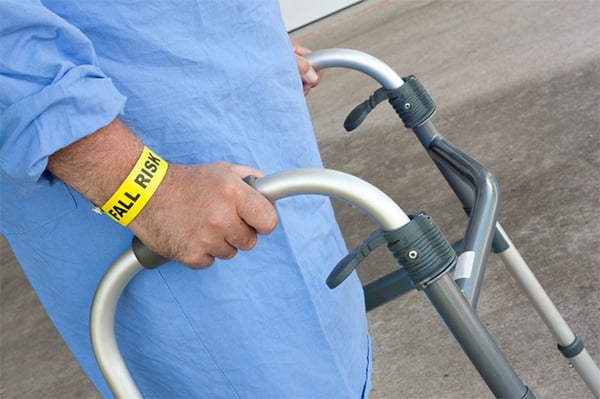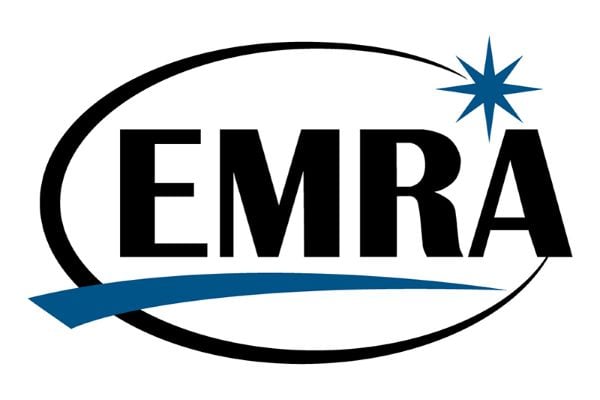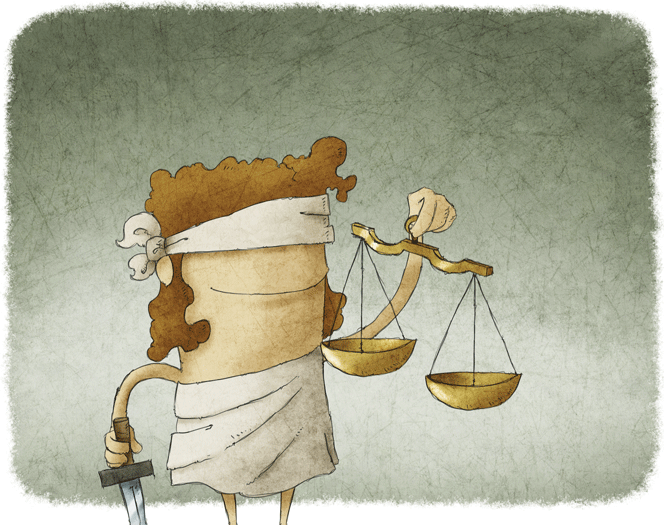The Litigators Lions Pit: The Top 10 Medical Malpractice Issues Every Resident Should Know
by Regina A. Bailey, J.D., M.D., LL.M.
Emergency Medicine Resident
Baylor College of Medicine
Sometimes when I walk around with the Emergency Department wearing my white coat and people see the “J.D., M.D.” they tell me: “That is great. You are really going to need that law degree if you are going to practice Emergency Medicine.” Statements like this illustrate a common perception within our field and in the public that emergency physicians are a litigator’s dream. Moreover, being sued is one of every doctor’s worst fears. The following article seeks to inform you, the resident, about the 10 things you have to know about malpractice in order to avoid being sued.
1. Can Residents Get Sued?
Heck yeah, they can! Emergency Medicine Residents can and have been sued for medical malpractice. In the past, residents were held to similar standards of care as other residents in same field of training and attendings were held to similar standards of care as other attendings in the same field.[1] However, recent cases have revealed that residents may be held to the same standard of care as an attending in their field.[2] If a resident is sued for malpractice, the attending is often sued as well because he has the ultimate responsibility in supervising the resident.[3] The attending is usually found to be primarily responsible for the care of the patient.[4] Although the resident may not be financially responsible for the damages or the costs of litigation (all residency programs cover residents with malpractice coverage), it is still on your record and in some states must be reported to the state medical board. Although rare, some patients have even sued the medical school or residency program for improperly training the resident; other times the individual being sued will try to shift the blame to their residency program for not training them sufficiently.[5]
2. Who Gets Sued in the ED?
A recent study on medical malpractice showed that most malpractice claims from injuries that occurred in the ED were caused by other (non-Emergency Medicine) specialty groups. Only 19% of claims were actually attributable to Emergency Medicine physicians.[6] The primary causes of injuries were errors in diagnosis (failure to diagnose or incorrect diagnosis), performing a procedure improperly, and delay of admission, consultation, performance and/or treatment.[7]
3. Why do emergency physicians get sued?
The most common diseases associated with ED lawsuits are acute myocardial infarction and appendicitis.[8] AMI was the most common missed diagnosis and the most common disorder in claims relevant to patient deaths.[9] Another area where emergency physicians are found to have liability is when the results of laboratory tests ordered in the ED come back after the patient leaves the hospital and no one follows up on the test results. If a test is ordered in the ED, the physician may be held liable for a negative outcome if the results are not communicated to the patient.[10] This includes incidental findings that may not be relevant to the patient’s chief complaint.
4. What constitutes malpractice and how are doctors found to be negligent?
Traditional negligence cases involve 4 elements: duty, breach of duty, causation, and damages.[11] All four elements must be present for a physician to be found guilty of negligence/malpractice.
- The first element is whether the physician has a duty to the patient. Duty is established if there is a physician-patient relationship. A physician-patient relationship is established when someone seeks assistance from a physician and the physician agrees to undertake diagnosis and treatment of the individual.[12] The duty typically begins when the physician begins to evaluate, provides medical care or starts treatment. The duty to treat requires the doctor providing the treatment to provide that care under the same standards as a similar doctor in the same specialty. Standard of care within the Emergency Medicine community is typically evaluated by using expert witnesses who will cite textbooks such as Tintinalli’s, Rosen’s and practice guidelines created by organizations like ACEP.[13]
- The next step in evaluating negligence is whether the physician breached his duty to the patient The physician has breached his duty if he has not provided the appropriate standard of care to that patient.
- Next, the patient needs to prove that he suffered some sort of harm or damage. If there is no harm or damage, then there can be no negligence (but the patient may have a cause of action under other laws, such as battery).
- Lastly, that breach of duty must have caused the damage to the patient.
5. What are the chances this law suit will stick?
The good news is that the majority of malpractice claims (64%) were either withdrawn, dropped or dismissed without any payment to the plaintiff (in most cases because the doctor was not negligent). Only 1% of total claims studied found a verdict for the plaintiff (29% of cases were settled with some payment to the plaintiff).[14] So although there are a large number of malpractice claims involving the ED, the majority of the claims do not make it to trial and most do not require payment to the injured parties. Also, the average award was found to be correlated with the severity of the injury. Losses of sight, amputation, paralysis, and brain damage are associated with higher payouts.[15]
6. What are some of the most common legal defenses to malpractice?
The first is consent, especially when it relates to complications of procedures. If a patient has been adequately informed by the physician of the risks of a procedure and the patient signs the consent form, the physician may not be liable for negligence even if there is an adverse event or outcome.
7. What are special circumstances that would make me immune from litigation?
In a few states Good Samaritan laws will cover physicians in hospital settings if they assist in an emergency, but only if it is outside of the normal scope of the physician’s responsibility (i.e., he has no previous relationship with the patient) and they do not receive payment for their services.[16] What about if you are on vacation, flying on an airplane and the flight attendant asks, “Is there a doctor on the plane”? Under the Aviation Medical Assistance Act, anyone (including physicians) that provides medical assistance on an airplane is protected from liability, as long as they did not act with willful or wanton misconduct (gross negligence).[17]
8. What if I get sued by a patient who has not followed any of my advice?
Another defense is contributory negligence. If a patient does not follow medical advice, fails to follow-up, does not follow discharge instructions or withholds information from a physician and the patient suffers a bad outcome, the physician may be resolved from liability based on contributory negligence.[18] Under this defense, the patient will not receive any damages.
9. What are the costs of being sued?
Why should you be worried about being sued if your malpractice insurance will likely cover the costs? In addition to being a mark on your record, medical malpractice is time consuming and expensive for the physician sued. One recent study showed that on average, malpractice cases take 45 months for resolution and the average cost of litigation can easily exceed $100,000.[19] The costs of the litigation have cause increased malpractice premiums and increased health care costs.
10. How can emergency residents and physicians avoid being sued?
Keep up to date with practice guidelines (ACEP is a great resource for free clinical practice guidelines).[20] Care for your patients with the best quality of care you can. Follow-up with any laboratory or radiology tests that you order that return after the patient leaves. If an incidental finding is discovered in any of the tests, inform the patient (even better, inform the patient and the patient’s primary care physician) and document that you informed the patient. Make sure for any procedure you fill out a consent form and discuss the benefits and risks of any procedure.
[1] C. Ott, et. al. Medical Malpractice and the Emergency Medicine Resident. Annals of Emergency Medicine. December 2000; 36:631
[2] Id. At 632; See also, Pratt vs. Stein, 444 A2d 674 (Pa Sup Ct 1982).
[3] Id.
[4] Id.
[5] Id. At 633
[6] T. Brown, et. al. An Epidemiologic Study of Closed Emergency Department Malpractice Claims in a National Database of Physician Malpractice Insurers. Academic Emergency Medicine, 17: 555-560 (2010).
[7] Id.
[8] Id.
[9] Id.
[10] G. Moore, et. al. Liability of Emergency Physicians for Studies Ordered in the Emergency Department: Court Cases and Legal Defenses. Journal of Emergency Medicine, 40(2): 225-8 (Feb 2011).
[11] 3-12 Hooper Lundy & Bookman, Treatise on Health Care Law § 12.04 (Matthew Bender, Rev. Ed.).
[12] Julie Reed, Cybermedicine: Defying and Redefining Patient Standards of Care, 37 Indiana Law Review 845, 855-6 (2004).
[13] J. Tintinalli, Tintinalli's Emergency Medicine: A Comprehensive Study Guide, Seventh Edition (2010); J. Marx, Rosen's Emergency Medicine, Seventh Edition (2009); American College of Emergency Physicians. ACEP Clinical Policies. https://www.acep.org/clinicalpolicies/.
[14] Brown at 557.
[15] Brown at 557.
[16] M. Hudson, et. al. Defenses to Malpractice: What Every Emergency Physician Should Know. The Journal of Emergency Medicine (2010) at 2-3.
[17] Id. at 4. See also, Aviation Medical Assistance Act 1998 (H R 2843).
[18] Id. at 4
[19] D. Cohen, et al. Malpractice Claims on Emergency Physicians: Time and Money. . The Journal of Emergency Medicine (2009). See also G. Ortiz, COMMENT: MEDICAL MALPRACTICE DAMAGE CAPS - CONSTITUTIONAL PER SE IN TEXAS, BUT AT WHAT PRICE? A LOOK AT ALTERNATIVE PATIENT COMPENSATION SCHEMES. 43 Hous. L. Rev. 1281, 1299 (Winter 2006).
[20] American College of Emergency Physicians. ACEP Clinical Policies. https://www.acep.org/clinicalpolicies/.
Related Content







